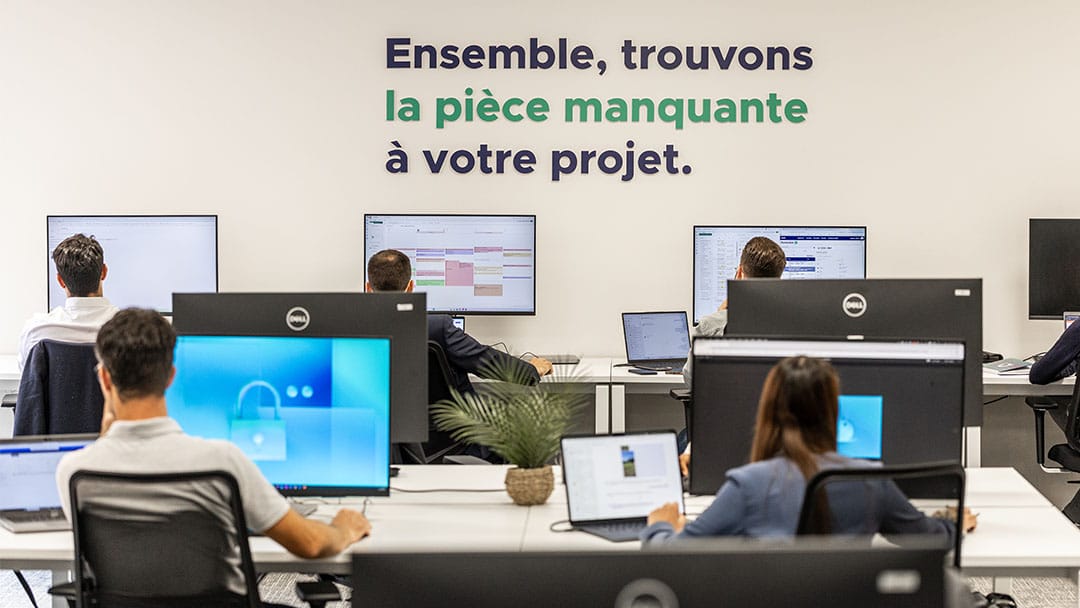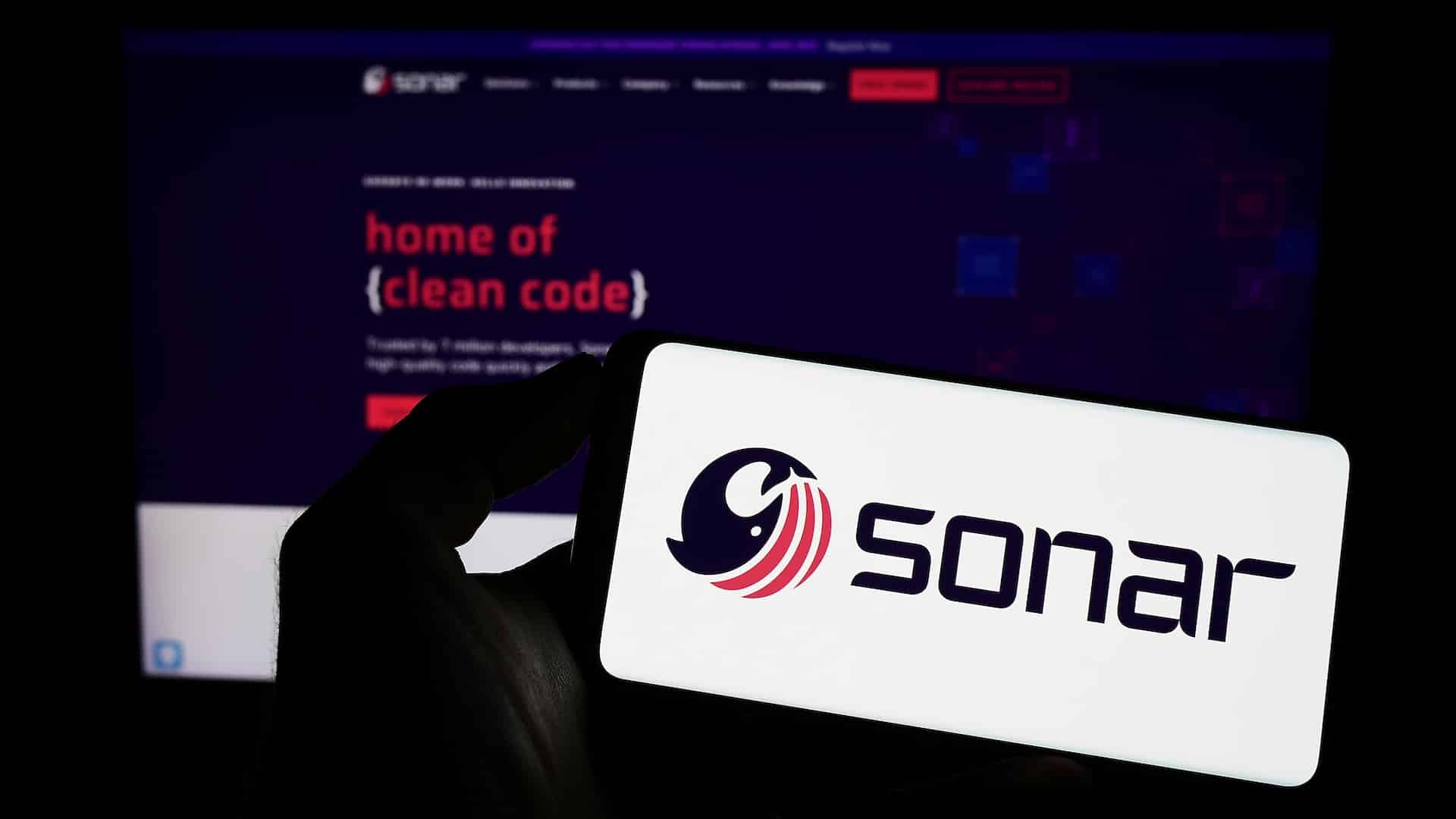Discover everything you need to know about working as a full-stack developer: salary, missions, role, responsibilities and career development.
What exactly is a full-stack developer?
A full-stack developer is versatile and can work as an all-rounder: they have the ability to develop both the front-end and back-end. The term “full-stack” refers to “all the layers of an application”. With this type of profile, it’s possible to build an application from start to finish.
The role and responsibilities of a full-stack developer
Full-stack developers are versatile and able to understand the whole application. This overview enables them to work efficiently between front-end and back-end teams, and even to work autonomously on end-to-end projects.
Here are the responsibilities of a full-stack developer:
- Design:it’s essential to think ahead about the technical architecture that is needed to develop a feature or to ensure a solid foundation for the project.
- Front-end development: the front-end is created using technologies such as HTML, CSS and JavaScript, as well as frameworks such as Angular, React or Vue. The aim is to design intuitive, responsive interfaces, adapted to web constraints to deliver an optimal user experience.
- Back-end development : the back-end employs technologies such as Java, Python, Ruby or Node.js. It involves building server logic, manipulating data and, most importantly, developing APIs (application programming interfaces) that enable communications between the front-end and back-end.
- Database management: designing, managing and optimising the database is crucial when it comes to ensuring the reliability and performance of the application. Knowledge of technologies such as MySQL and/or NoSQL is useful.
- Testing and debugging: writing unit, integration and functional tests is essential if you want to guarantee the quality of your code. This also includes testing and debugging functionalities, whether they are front-end or back-end.
- Deployment: deployment skills are crucial, especially with the widespread use of continuous integration and deployment (CI/CD). Management of pipelines ensures reliable, automated deployments as the development progresses.
- Communication: a development team may include a variety of profiles, such as UX/UI designers, testers, business analysts, product owners, etc. It is therefore important to be able to effectively communicate with all stakeholders to ensure the cohesion and alignment of the project.
What skills do I need to become a full-stack developer?
A full-stack developer must have a wide range of skills, including:
- Design and architecture
- Software architecture: learn about the different architecture models (MVC, microservices, serverless models) to design a structure that is coherent and scalable, while also meeting the needs of the organisation.
- API design: design well-structured, documented and easy-to-use APIs to interact with other applications.
- Design patterns: in-depth knowledge of design patterns (such as Singleton, Factory, or Observer) in order to efficiently solve recurring design problems.
- Front-end development
- HTML, CSS and JavaScript: master these three fundamental technologies so you can create appealing, interactive user interfaces.
- Front-end frameworks: use modern frameworks like React, Angular or Vue.js to develop dynamic, responsive web applications.
- Responsive design: design interfaces that can be adapted to different devices (mobiles, tablets, computers) for an optimal user experience.
o Accessibility and UX: design interfaces that are accessible to all users, ensuring best practices in accessibility and user experience are incorporated.
- Back-end development
- Back-end language: master at least one language on the server side, such as Node.js, Python, Ruby, Java or PHP so that you can manage application logic and interactions with databases.
- Framework: familiarity with frameworks such as Express (Node.js), Django (Python), Ruby on Rails, or Spring (Java) will mean you can structure and accelerate back-end development.
- API REST: design and develop APIs to facilitate communication between the front-end and back-end.
- Security: know about security principles (authentication, authorisation, protection against common attacks such as XSS, CSRF and SQL injections) to ensure your application is secure.
- Database management
- Relational database: master SQL databases such as MySQL, PostgreSQL or SQLite to organise and manage structured data.
- Non-relational databases: learn how to use NoSQL databases like MongoDB, Cassandra or Redis to manage unstructured or semi-structured data.
- Query optimisation: know how to optimise SQL queries and design a high-performance database architecture to avoid slowdowns.
- DevOps and deployment
- CI/CD: a good knowledge of Continuous Integration and Deployment (CI/CD) to automate testing and deployment during development and production releases.
- Containerisation and orchestration: know how to use Docker to create containers and Kubernetes to deploy and manage applications in a distributed way.
- Cloud Computing: Cloud skills (AWS, Azure, Google Cloud) for deploying and managing resources.
- Test and quality
- Unit testing: know how to write unit tests to check the reliability of basic functions and guarantee the absence of regressions in new developments.
- Integration and functional testing: prepare and carry out integration and functional tests to ensure that the application functions correctly overall.
- Debugging: use debugging tools to identify and correct code errors efficiently.
- Soft skills
- Communication: be able to communicate clearly and explicitly with stakeholders to ensure alignment with project objectives.
- Time management and organisation: be able to prioritise and effectively manage front-end and back-end tasks, as well as day-to-day contingencies.
- Analytical skills: an analytical approach and ability to solve technical problems in a methodical manner.
- Continuous improvement: evolve alongside technology and be proactive in learning new skills to stay up-to-date.
These different technical and personal skills enable a full-stack developer to intervene at any level of the development cycle, from design and development to production, while also carrying out optimisations to ensure a convincing user experience.

How much can you earn?
A full-stack developer’s salary will increase in line with years of experience as well as your location. Depending on whether you’re based in France (with differences between the Paris region and the rest of France) or Switzerland, your salary will vary. Last but not least, salaries can vary according to the size of the company (large group, SME, start-up), the technologies that are mastered and the company’s field of activity.
What do you need to study to get this job?
Switzerland
- Bachelor’s degree: a 3-year diploma that provides a solid foundation in front-end and back-end development, database management and other skills required for a full-stack developer role.
Example: Bachelor in Computer Science - Master’s degree: a 2-year degree that deepens your skills in IT development and project management, with possible specialisations in web technologies.
Example: Master in Computer Science, Master in Computer Science and Software Engineering, etc. - HES (University of Applied Sciences): a 3-year diploma that enables students to acquire technical and practical skills that are in demand by employers, such as application development, databases, networks, web and mobile development. This diploma prepares students to enter the world of work after graduation.
Example: HES Computer Science and Communication Systems or HES Computer Science or HES Business Computer Science - ES (École Supérieure): a 2 to 3-year professional diploma, focused on the acquisition of technical and practical skills, such as software development, database management, networks, and web and mobile technologies. An ES diploma prepares students to enter the job market as soon as they graduate, particularly taking up skilled technician or developer positions, providing a direct response to the needs of the industry.
Example: Computer Science ES or Business Computer Science ES - CFC (Certificat Fédéral de Capacité) [Federal Certificate of Proficiency]: a 4-year work-study programme focussed on a practical approach and delivered by vocational schools and training companies. It gives students hands-on experience in full-stack development.
Example: Computer scientist CFS - Bootcamp: intensive training, generally lasting from a few weeks to a few months, with a strong emphasis on the practical and technical skills expected by employers in the development field. This type of programme teaches the basics of application development, databases, networks, web and mobile development.
Example: Le Wagon, Constructor etc. - Self-taught: many full-stack developers are self-taught, using online training platforms such as OpenClassrooms, Udemy or Codecademy. This path is well suited to those who prefer a flexible learning approach and are motivated to progress on their own initiative.
France
- BTS (Brevet de technicien supérieur): a Bac +2 level diploma that provides training in a number of IT specialties. The course provides a solid grounding in the development and management of IT systems and is a good option if you want to enter the job market quickly with recognised technical skills.
Example: BTS SIO (Services Informatiques aux Organisations – IT Services for Organisations) or BTS SN (Systèmes Numériques – Digital Systems) - BUT (Bachelor Universitaire de Technologie): a Bac +3 level diploma providing basic training in computer science, including programming, database management, project management and web technologies.
Example: BUT Informatique [IT] (formerly DUT Informatique) - Licence en Informatique (Bachelor’s degree in Computer Science): a 3-year degree in computer science, giving you a thorough understanding of programming concepts, algorithms and systems architecture.
- Master’s degree: a 5-year higher education diploma that deepens skills in IT development and project management, with the option to specialise in web technologies.
Example: Master in Computer Science or Master MIAGE (Méthodes Informatiques Appliquées à la Gestion des Entreprises – Computer Methods Applied to Business Management). - Engineering schools: computer science engineering schools offer comprehensive training in all the technologies used in development, often providing the chance to specialise in web programming and information systems.
Example: INSA, Polytech etc. - Self-taught: many full-stack developers are self-taught, using online training platforms such as OpenClassrooms, Udemy or Codecademy. This path is well suited to those who prefer a flexible learning approach and are motivated to progress on their own initiative.
- POEI (Préparation Opérationnelle à l’Emploi Individuelle – Individual Operational Preparation for Employment): A training programme financed by France Travail (formerly Pôle Emploi) for jobseekers, enabling them to learn the skills companies are looking for, including full-stack development.
- Bootcamp: intensive training, generally lasting from a few weeks to a few months, with a strong emphasis on the practical and technical skills expected by employers in the development field. This type of programme teaches the basics of application development, databases, networks, web and mobile development.
Example: Le Wagon
What are development prospects like? What career paths are possible?
With several years’ experience and a solid grasp of the various facets of development, a full-stack developer can look forward to moving into roles such as:
- Tech Lead: lead and supervise development teams, ensuring the technical quality of projects and providing advice on solving complex problems.
- Technical architect: design and structure project architecture, ensuring scalability, security and performance of all technical components.
- Technical project manager: manage projects by combining technical expertise and team coordination, to ensure compliance with deadlines, budgets and quality standards.
- Product Owner: drive the product vision by defining and prioritising functionalities to meet business needs and user expectations.
- Trainer: pass on your technical expertise and support other developers in their development, either by working in training establishments or by offering training courses in the private sector.
What challenges should a full-stack developer expect to face?
The main challenges of a full-stack developer are:
- Versatility: being able to work on both the front-end and back-end, manage deployment, run tests and solve production problems is demanding. This diversity of tasks requires the full-stack developer to be able to adapt quickly to the varied needs of a project, and to master every aspect of the technical stack.
- Technology monitoring: technologies and tools evolve at a rapid pace, particularly in development. To remain competitive and successful, full-stack developers need to keep a constant eye on the latest technology, learn new languages, frameworks and practices, and regularly update their skills in a number of areas.
- Workload management: you need to be able to juggle design, feature development, testing, debugging, and coordination with stakeholders (project managers, designers, etc.). This versatility can make workload management complex, especially when you have to alternate between creative and technical tasks under tight deadlines.
These challenges require the full-stack developer not only to have technical skills, but also to be highly adaptable, organised and able to communicate effectively in a dynamic working environment.
What jobs are similar to being a full-stack developer?
The following professions are similar to the role of full-stack developer and require you to have some of the same skills, although they may have slightly different responsibilities or specialities.
- Front-end developer: expertise in front-end development; designs and implements the user interface of web applications, using technologies such as HTML, CSS, JavaScript with frameworks to deliver an intuitive and responsive user experience. Will often collaborate with designers and product teams to translate mock-ups into functional interfaces.
- Mobile developer: a mobile developer specialises in creating mobile applications for platforms such as Android and iOS. They use tools like Kotlin, Swift, or React Native, and although the focus is different from full-stack, a mobile developer can also be versatile in back-end and front-end in some cases.
- Back-end developer: expertise in back-end development, dealing with server logic, database management and API implementation to ensure server-side applications run smoothly. They focus on the performance, security and scalability of the technical infrastructure.
- DevOps: DevOps combines development and operations management. This role is more focused on automating deployment pipelines, continuous integration and managing server environments, while still taking note of back-end responsibilities.








